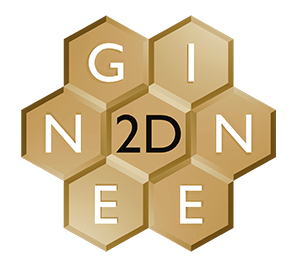2D ENGINE consortium has realized ultrathin layers of semiconductor and dielectric materials using liquid metal catalyst growth, greatly assisted by in-situ, real time monitoring tools developed partly within the project.
Some of the exiting science and engineering results have been recently announced in the “Novel (2D) materials and their applications” workshop in Aachen 17-18 February, organized by 2D ENGINE members. Ultrathin SiC, GaN semiconductors and h-BN dielectrics have been presented and the liquid metal catalyst growth technology has been detailed in the work both experimentally and theoretically by 2D ENGINE members.
The Consortium is now ready to transfer the ultrathin layers onto clean target substrates to realize proof-of-concept (opto)electronic devices. Due to unconventional growth substrates and methodology used, layer transfer is challenging and will consume most of our resources in the next phase of the project.


